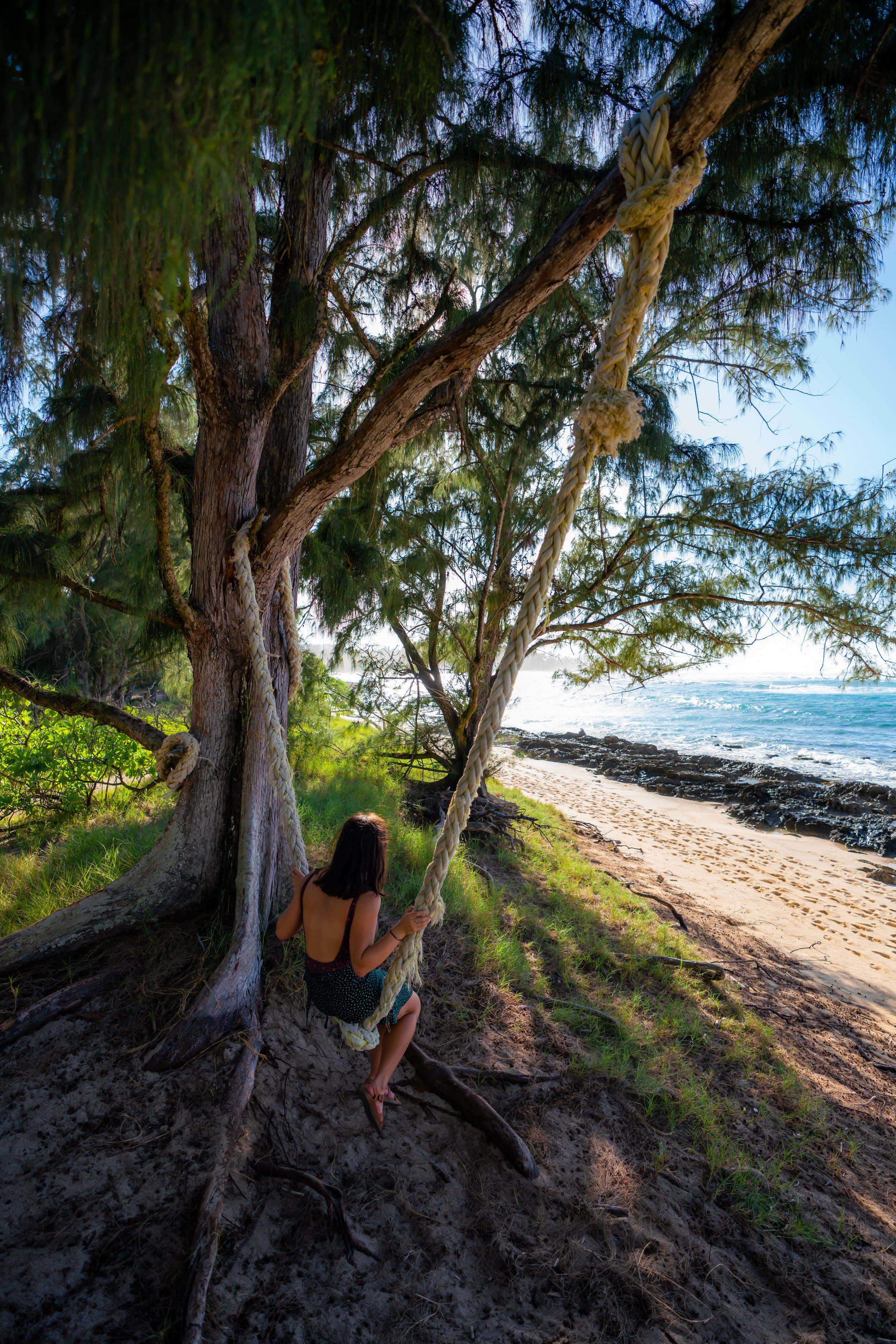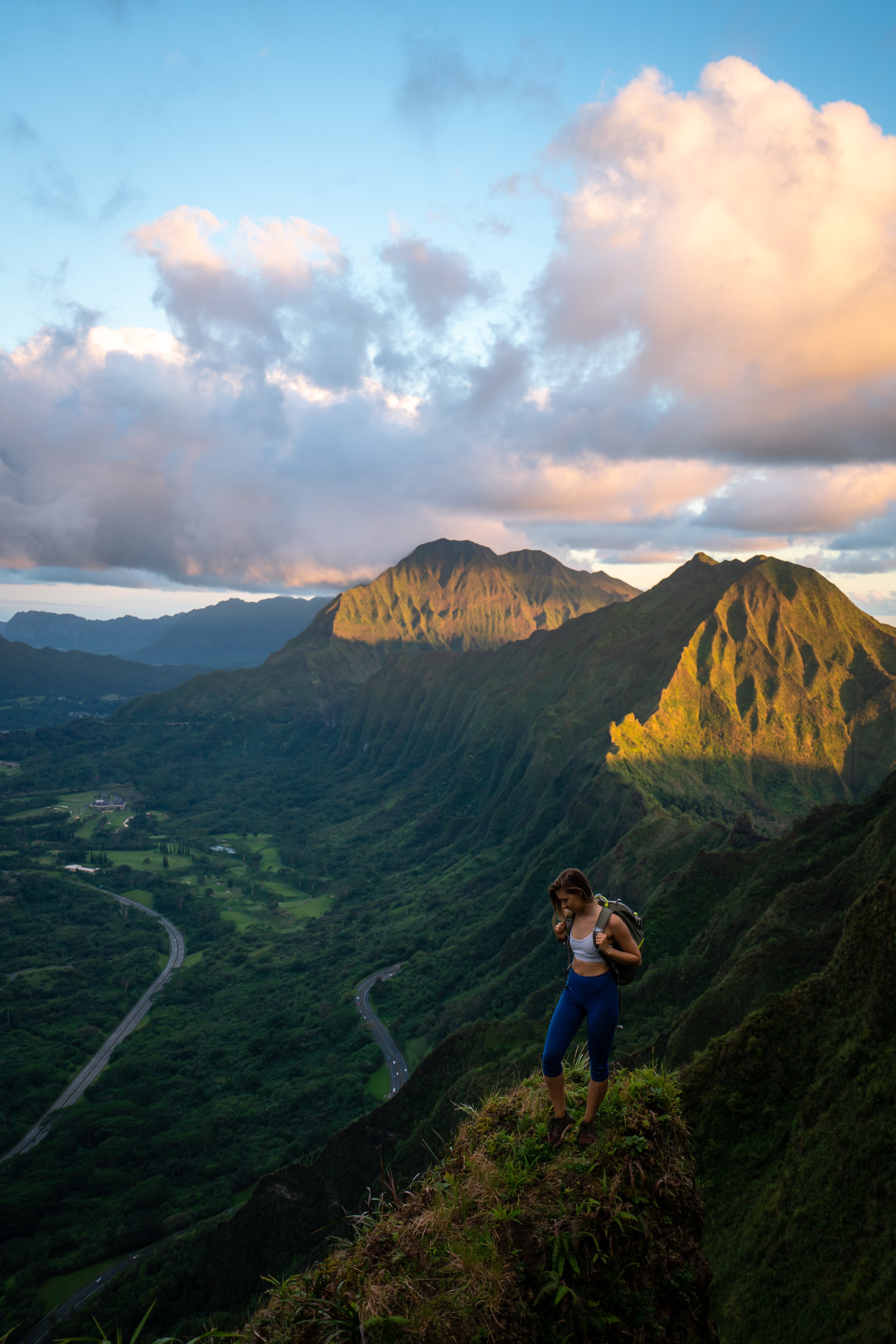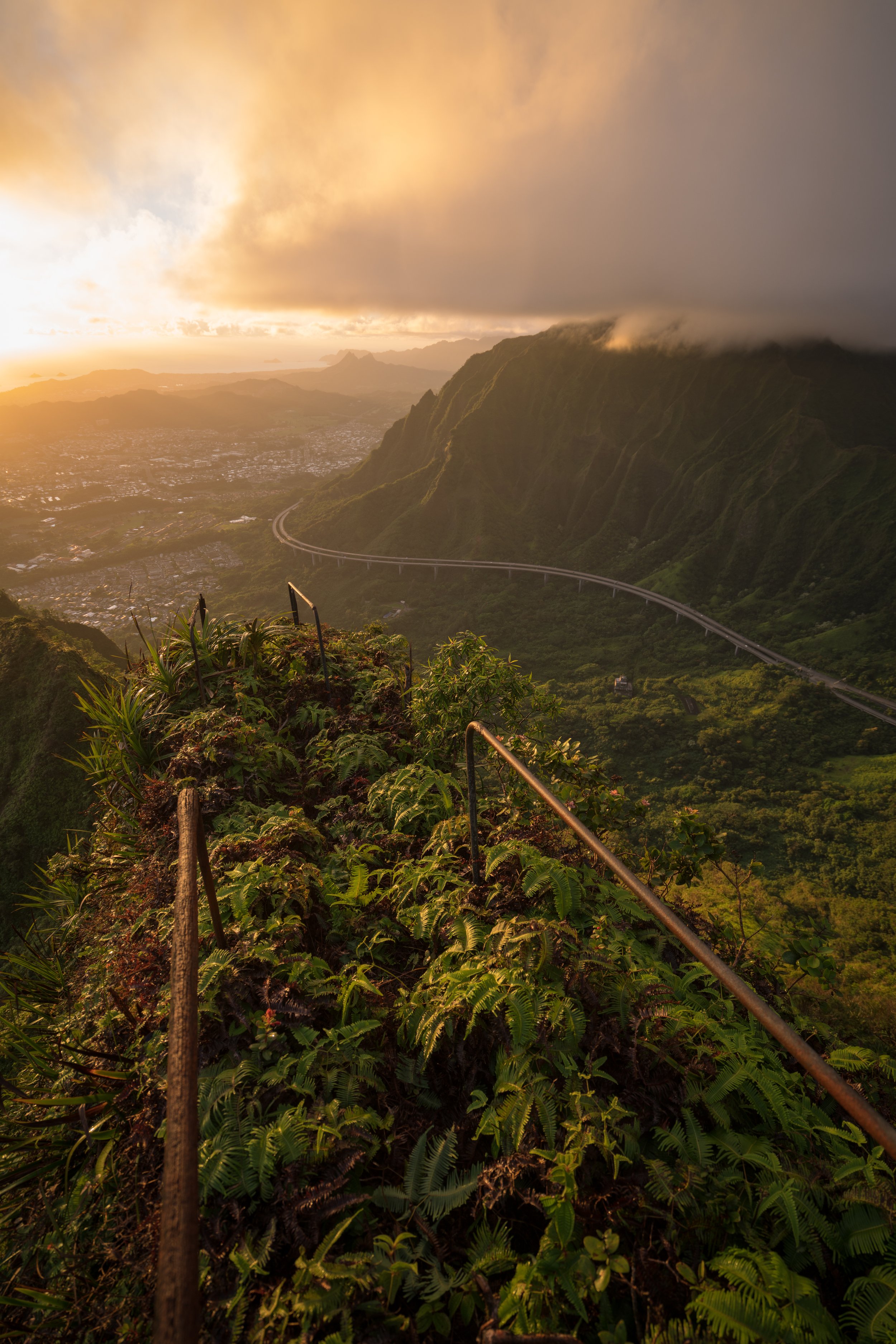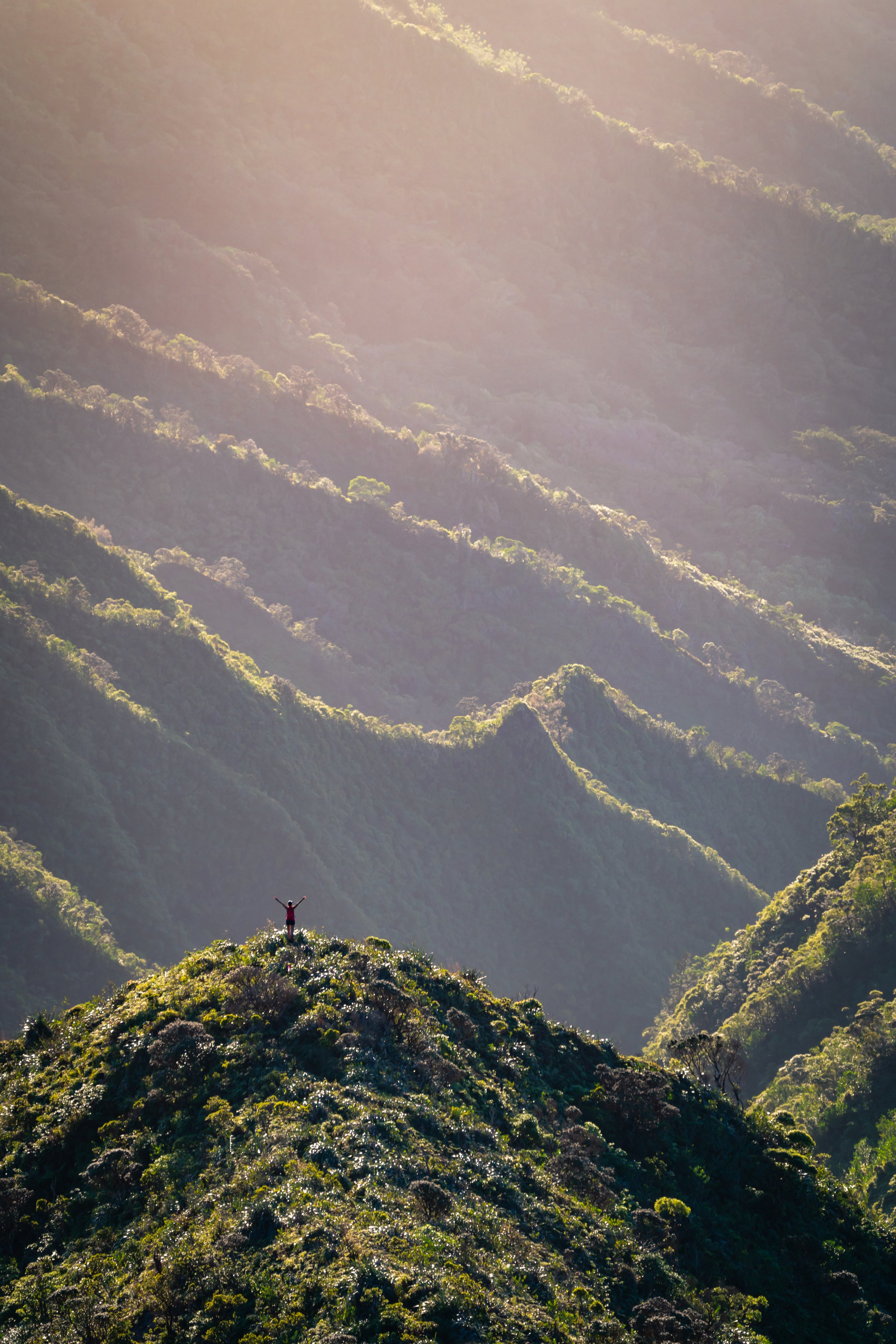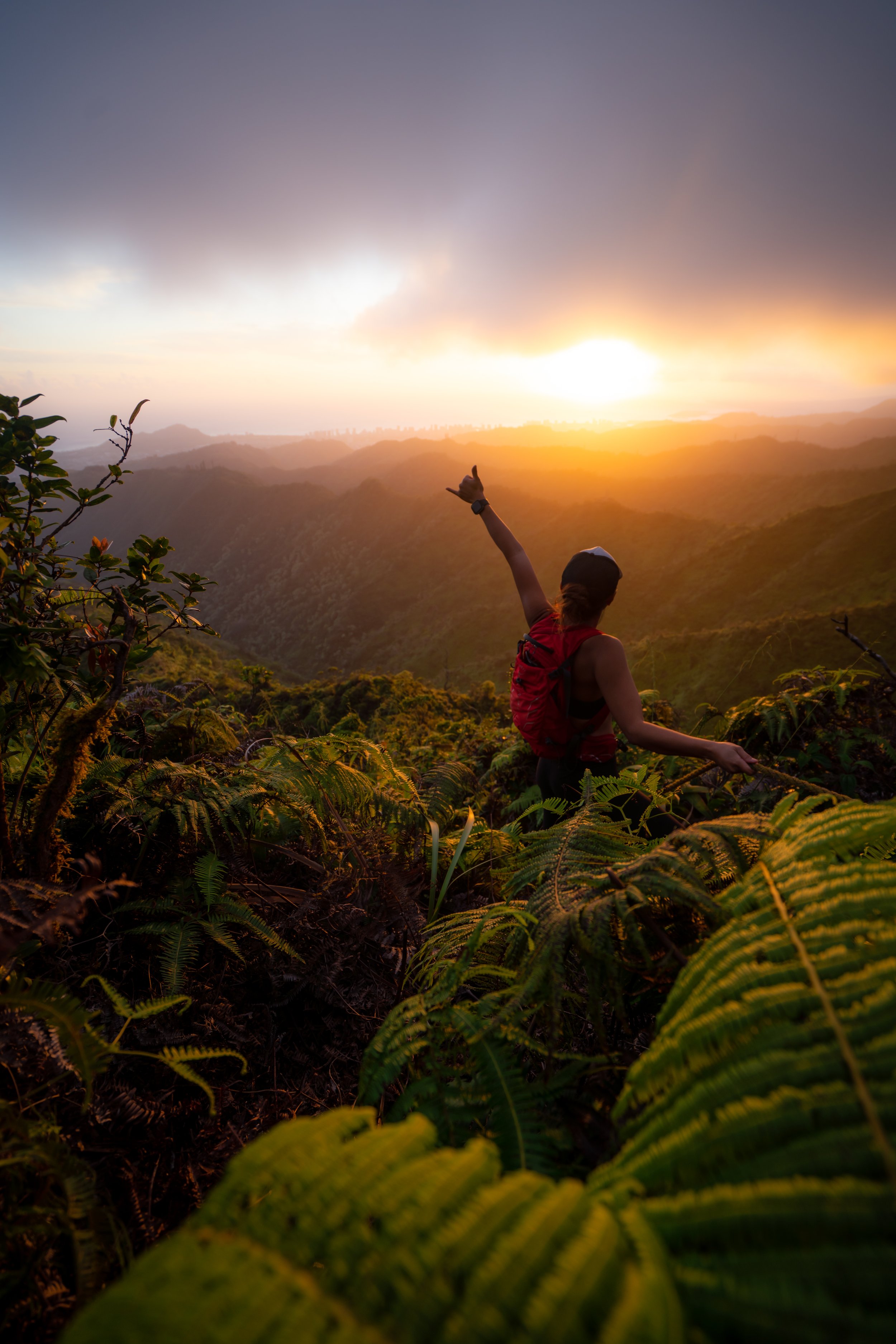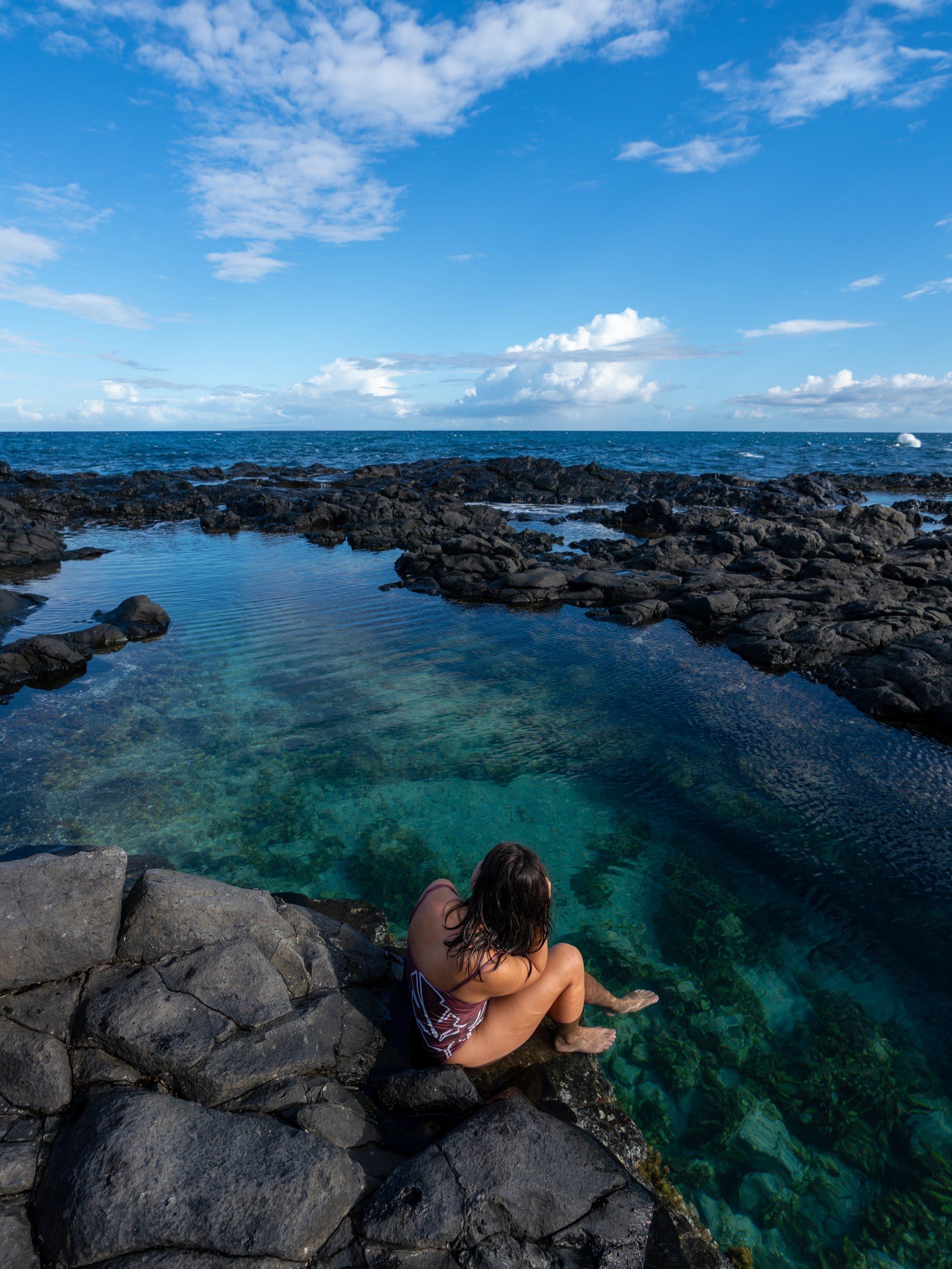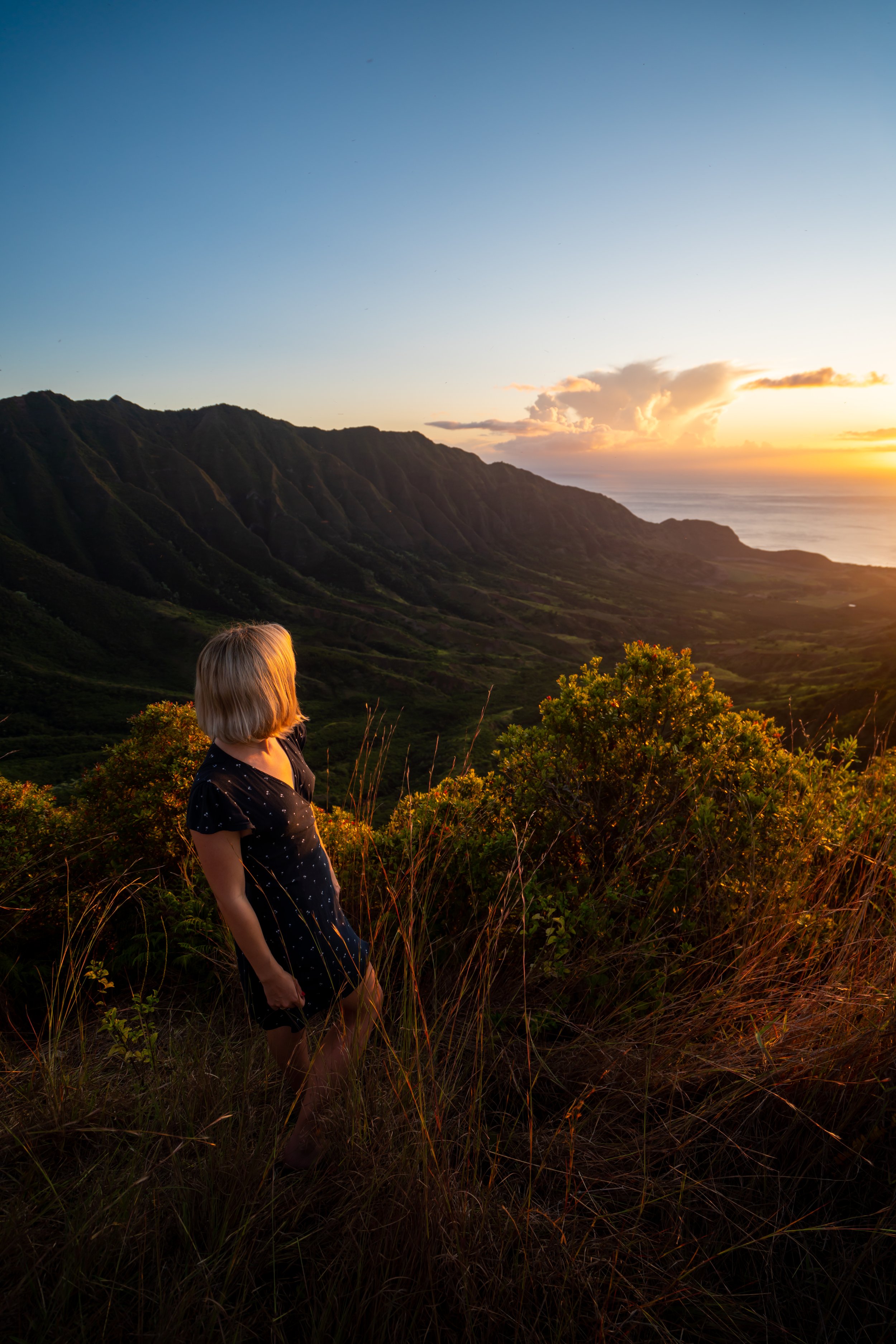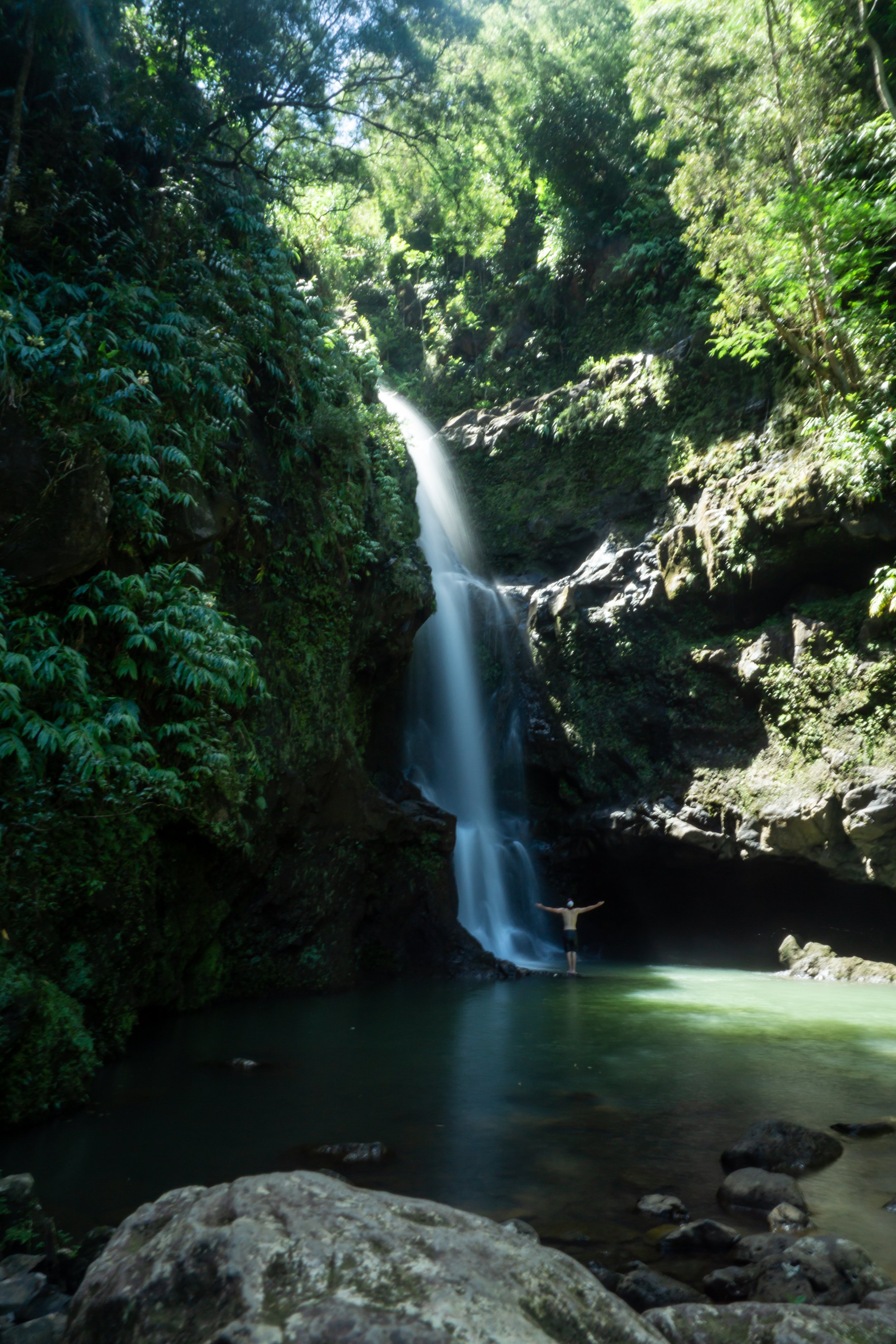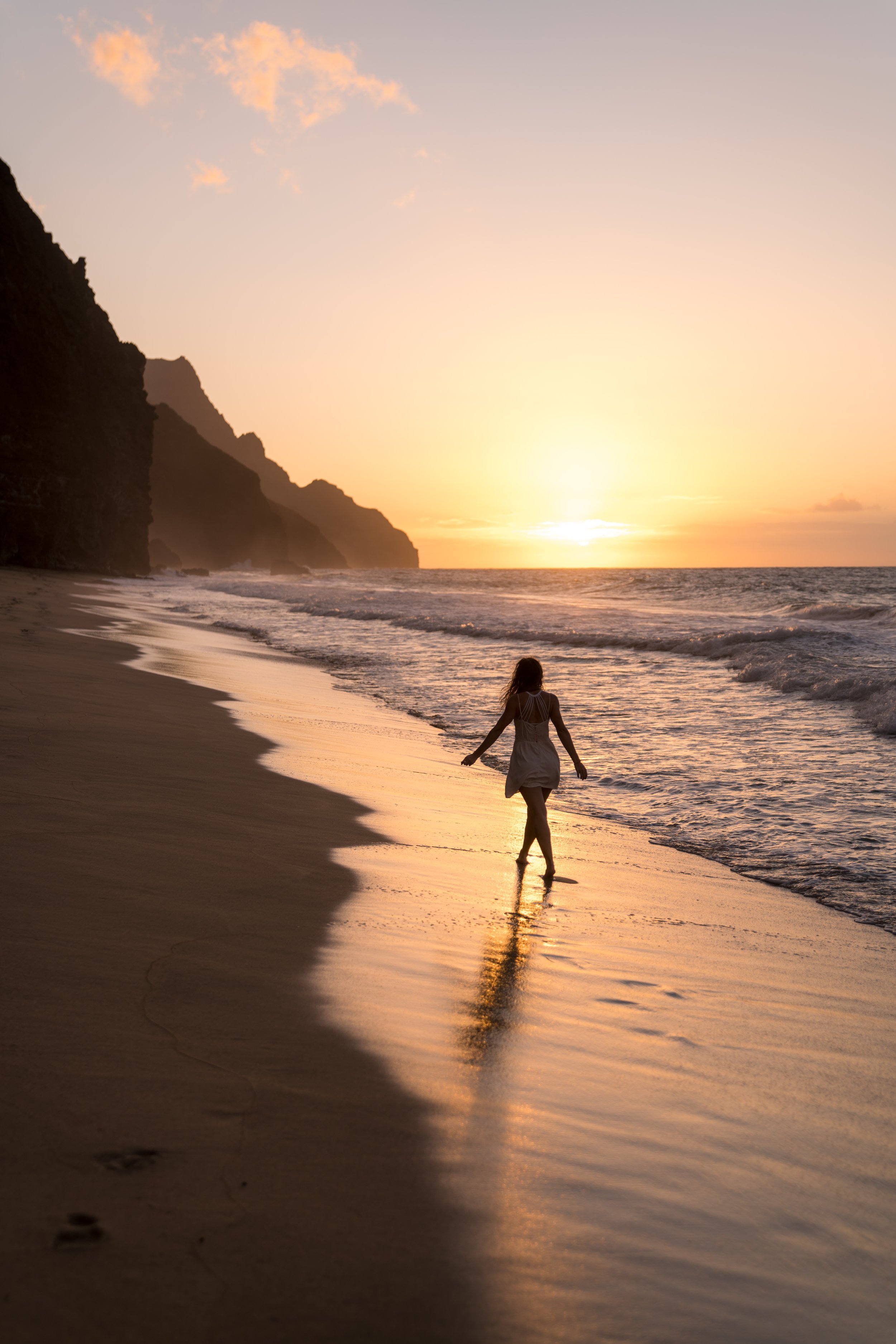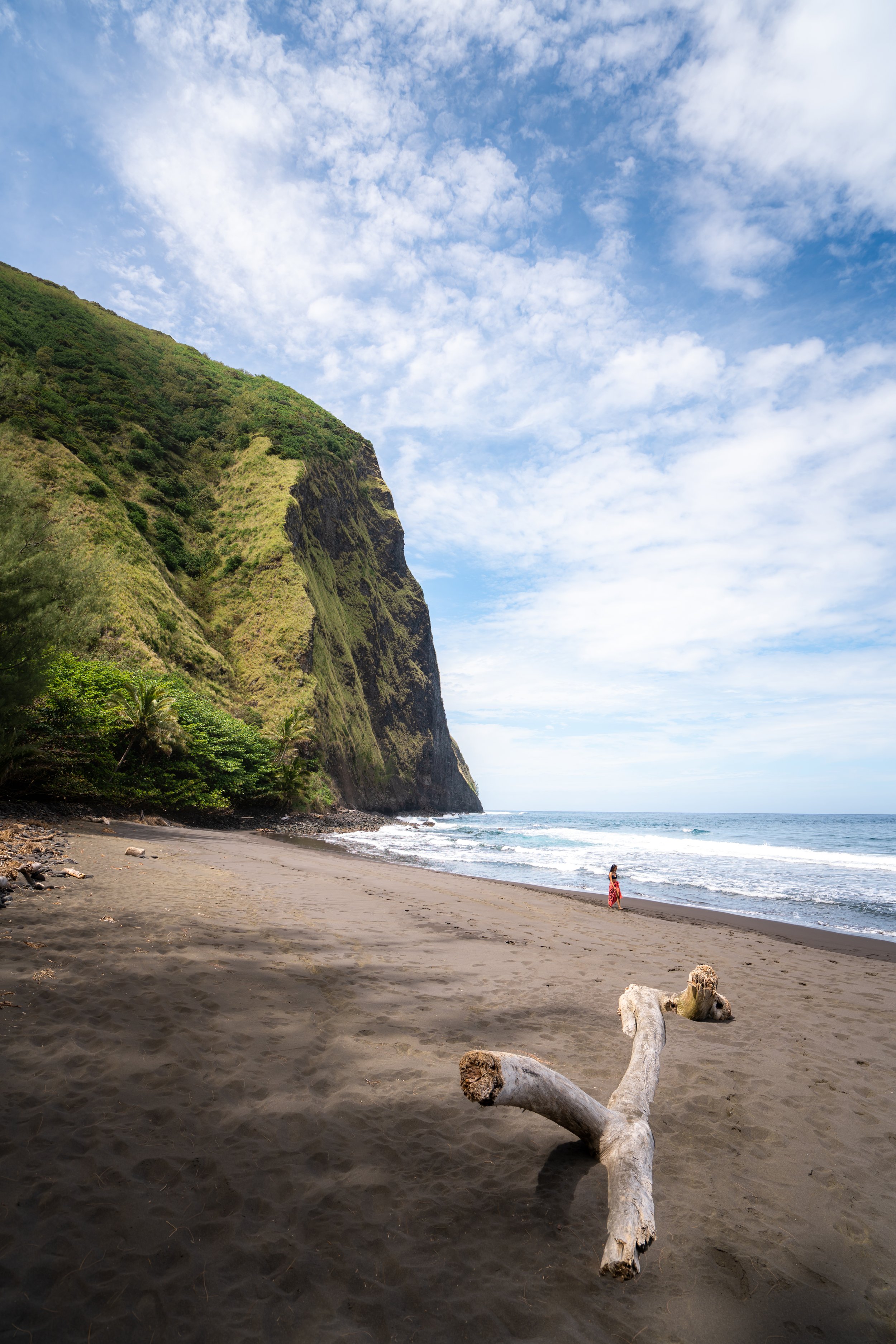Hiking the Kīpapa Ridge Trail on Oʻahu, Hawaiʻi
Distance (One Way): 9.7 miles / 15.6 km
The Kīpapa Ridge Trail on Oʻahu is a long, slow, tedious, and—most of all—extremely remote day hike that I personally considered to be one of the most challenging hikes on the island. I emphasize this to say, don’t take Kīpapa Ridge lightly.
This is because Kīpapa Ridge is very overgrown, very slow-moving, and you will be army crawling through pig tunnels more than most other hikes on the island.
For these reasons, Kīpapa Ridge is one of only a few Hawaiʻi hikes where it makes sense to talk about it from a top-down approach because it is highly unlikely that anyone will be starting from the trailhead in Mililani and hiking up to the summit. It also would be that much more miserable to fight through the overgrowth going uphill than down.
That being said, the three most likely trails, in order to reach Kīpapa Summit on the Koʻolau Summit Trail (KST), are Mānana Ridge, Schofield-Waikāne, and Poamoho, which is the furthest away of the three.
In addition, the distance above is only one way from Kīpapa Summit to the Dole Plantation Road bridge over the H-2 Freeway.
All being said, I excluded talking about Kīpapa Ridge in my most challenging Oʻahu trails article because the hike really is that impractical to consider as a challenging, yet fun adventure.
Read My Separate Post: Most Challenging Trails on Oʻahu
My Hawaiʻi Hiking Checklist
Osprey 3L Water Bladder - The Osprey 3L water bladder is the most universal hiking and backpacking water bladder on the market, and it’s my go-to because of the slide-off seal that allows it to be quickly filled from the top. Additionally, individual parts are easily replaceable, such as the bite valve.
Blister / Heel Protectors - I swear by these cheap, amazing heel protectors to prevent blisters for nearly every kind of hiking and backpacking that I do!
Black Diamond Headlamp - Personally, I recommend the Black Diamond Storm because it is one of the brightest, lightest, and longest-lasting headlamps on the market—and trust me, the weight-to-battery-life ratio really does matter!
Hiking / Trail Running Shoes - Depending on the type of trail, I prefer to use either the Keen Targhee for longer, more rugged hiking or the HOKA Zinal Trail-Running Shoe for lighter, less intense trails. In either case, both have been amazing to me for many years across countless environments, and both can be found in men’s and women’s sizes. - (Men’s Keen / Women’s Keen) (Men’s HOKA / Women’s HOKA)
Waterproof Rain Shell - You never know when it may rain, and I’ve learned over the years that a rain shell is far better than a rain jacket. By this, I mean that it’s best to have something that the water will roll right off of, which is why I recommend the Patagonia Torrentshell 3L available in both men’s and women’s sizes.
High SPF Sunscreen - Packing high-SPF sunscreen is a must for long days outside!
Hiking the Kīpapa Ridge Trail
Starting from Kīpapa Summit, the trail gives you high hopes that it won’t take you that long to descend, especially when you get a view of the contour trail heading down from the ridge above.
However, we left the summit a few minutes after 3 p.m. and didn’t make it to the Dole Plantation bridge until around 9:15 p.m.!
With that in mind, I thought we would be on the ridge until midnight, given the pace the overgrowth would let us move.
Initially, the first section off of the summit is very straight forward until the area in the two photos below.
Here, you need to leave the ridge that you’re on and make a sharp u-turn where you see the Loulu palm in the second photo below.
While I don’t have a photo of this next part, look for a little switchback that cuts back the other direction when you descend close to the stream bed.
If you miss this little switchback, the bushwhacking will be miserable, as the real trail follows the stream bed for a few steps before continuing on the other side.
Kīpapa Cabin
The Kīpapa Cabin will be located almost exactly 2.0 miles (3.2 km) down the ridge, and it took us about two hours to get there from the summit.
In my experience, the door wouldn’t close shut.
No matter how hard I tried, it wouldn’t latch.
After the cabin, don’t get the impression that the trail looks like the photo below. You will get very few of these little nice sections when the Uluhe stops, but other than that, prepare to swim in the overgrowth.
I obviously don’t have pictures of the worst of it, but this is a pig tunnel trail, meaning that your feet will be the only part of yourself that will have a place to stand on the flat ground below. However, everything above that will be pushing through some of the worst overgrowth you can imagine.
It also means that there are sections where you will have to crawl through the pig tunnels. There’s really no other way to get through some of these sections. I think the worst one was about 30 ft. (9.1 m) of army crawling through a tunnel because of some fallen-down trees.
These two photos here are really the best case scenario, but these parts don’t last long.
This is the last photo I could get before dark, which I hope serves a reminder to pack a headlamp for what will likely be a long hike out in the dark!
In any case, know that the overgrowth on the trail doesn’t start to let up until the last 1.5 - 2 miles (2.4 - 3.2 km) before the ranch. If the trail didn’t start to become slightly more maintained near the bottom, we easily would have been on the ridge from 3 p.m. until midnight, like I thought.
Furthermore, I may have hated the palm grass toward the bottom of the trail more than the slow-moving Uluhe toward the top because it stirred up all of this dust in the air that kept making us sneeze and cough for what felt like forever!
Koa Ridge Ranch [Private Property]
On a different note, Koa Ridge Ranch is private property, and hiking should not be attempted without explicit permission from the ranch owners, as they do not want to be liable for hikers on their property.
Dole Plantation Road Bridge
At the end of Koa Ridge Ranch, the hike ends above the H-2 Freeway on the bridge shown below.
H-2 Freeway
This was just about the weirdest place imaginable for an Uber pick-up, but we made it work.
In any case, I don’t think I’ll be doing Kīpapa Ridge again, but best of luck if you’re giving it a go! ᨒ 🤘🏼
Native Plants on the Kīpapa Ridge Trail
The upper elevations of Kīpapa Ridge are one of the most native and biodiverse habitats on Oʻahu, and I say this for two reasons.
First, enjoy the native plants that can be challenging to see elsewhere, but I kindly ask that you do your part to minimize your impact in this sensitive environment.
Some of my favorites on the trail were the Koʻolau Loulu Palms, Kokolau, and Aʻe trees, to truly only name a few.
If you would like to learn more about these and many other native Hawaiian plants from across the islands, I encourage you to check out my separate post.
Read My Separate Post: Native Hawaiian Plant Guide
More Oʻahu Adventures
If you’re interested in reading about some more amazing Oʻahu adventures, check out my separate posts below!
Best Hotels & Restaurants in Waikīkī
If you’re trying to decided where to stay on Oʻahu, check out my top 10 list for the best resorts and restaurants in Waikīkī.
I break down what makes one hotel a better choice over another, so that you can find the best fit for your stay on the island.
Read My Separate Post: Best Waikīkī Hotels & Restaurants
HNL Airport-Hotel Shuttle
Prices on ride-share apps like Uber/ Lyft cannot beat the price of booking your hotel shuttle prior to arrival. I say this because there are additional fees for ride-share airport pick-ups at Honolulu Airport (HNL), which is why I recommend booking your transportation in advance using the options below.
Additionally, the last option below will go as far as the Ko ʻOlina Resorts on the West Side and Turtle Bay on Oʻahu’s North Shore!
Best Way to Book Rental Cars!
I travel quite a bit, and I know firsthand that finding a good rental car deal can be a challenge, but that’s why I recommend comparing all of your options with Discover Cars.
In short, Discover Cars is a well-known, reputable business that allows you to search for the best deal across companies, and they have the best full-refund cancellation policy I’ve ever seen, valid up to 72, or sometimes even 48, hours prior to your reservation!
Book Here: Discover Cars
Visiting Other Islands
If you are visiting Oʻahu or heading to another island, check out some of my personal recommendations for Oʻahu, Maui, Kauaʻi, Molokai, Lānaʻi, and Hawaiʻi Island (Big Island) in these separate posts.
If you’re trying to decide which island is right for your visit, check out my overview about each island in the post below.
Read My Separate Post: What is the Best Hawaiian Island to Visit?
What is the Best Time of Year to Visit Hawaiʻi?
The weather in Hawaiʻi can often appear to be warm and beautiful throughout the year, but in my experience, there is a lot more to consider when planning what time of year to visit the islands, such as what island you are considering, what sides of each island do you plan to stay, what activities are you most interested in, the wildlife, and countless other nuanced variables that can all impact the type of trip you can expect to have.
For these reasons, I highly recommend reading through my separate article to not only understand my thoughts regarding the best time of year to come to Hawaiʻi but also what you need to consider based on the time of year that you plan to visit.
Read My Separate Post: What is the Best Time of Year to Visit Hawaiʻi?
10 Best Tours & Excursions on Oʻahu
There are a lot of different tour options to choose from on Oʻahu, but to make it easier to decide, I made a list of my favorite tours because some things simply are better with a local guide!
Read My Separate Post: Best Tours on Oʻahu
Safety
All hikes in Hawaiʻi should not be compared to trails outside of the islands, and hikers should exercise due caution on every adventure, given that many are extremely dangerous.
By this, I mean that Hawaiʻi is known for hot, humid weather, steep, dramatic, and unstable cliffs, and flash floods, which can occur without warning. Therefore, it is important that you check the local forecast, understand the physical condition of your entire group, and pack sufficient food and water before attempting any adventure.
Disclaimer
All information provided on this blog is for informational purposes only and is not intended to be a substitute for information or advice from qualified professionals or managing agencies.
Noah Lang Photography LLC makes no representations or warranties regarding the accuracy or completeness of the information provided here, and readers should use their own discretion, judgement, and seek professional advice where it is appropriate.
Furthermore, Noah Lang Photography LLC shall not be held responsible for any injuries, lost individuals, or legal issues arising from the use of information provided on this website, and if applicable, the above safety disclaimer should be referenced to provide a generic overview of the risks involved.
All said, the content on this blog is for the sole use of Noah Lang Photography LLC, and unauthorized use or reproduction of this content is strictly prohibited.
Disclosure
This post is not sponsored.
However, some of the links in this post are affiliate links, which means that I may earn a small commission if a purchase is made through one of those links. This commission comes at no additional cost to you, and I only recommend products that I personally use and believe will add value to my readers. Thank you for your support, which enables me to continue creating more!
To read the full privacy policy, click here.

About This Blog
Noah Lang Photography, also known as @noahawaii, is 100% reader-supported!
I do not accept guest articles or sponsored content of any kind on my blog, which is why, if you enjoy the outdoor and travel content I create, please consider buying me a coffee!
I appreciate your support, which helps me continue to keep this blog alive!











